

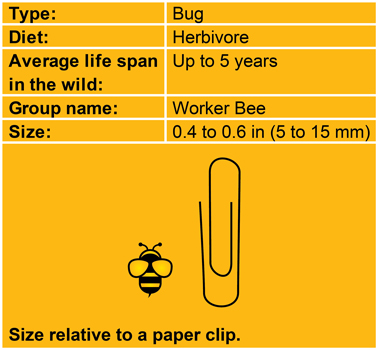
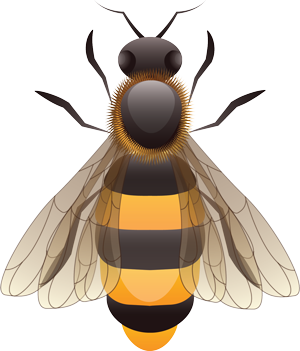
The worker is the smallest bee and is about half the weight of the queen and drone. The abdomen is pointed and the wings are short. Female worker bees literally work themselves to death over the course of their lives. They provide food for grubs, drones and the queen bee and build the wax honeycomb that forms the hive’s integral structure. Workers are the only bees that most people ever see. These bees are females that are not sexually developed. Workers forage for food (pollen and nectar from flowers), build and protect the hive. In fact, they are model citizens – they clean, ventilate, defend and repair the hive, and most ingeniously of all worker bees are experts in air conditioning. They keep the hive at a constant temperature of around 34’C. If the colony is too hot, they douse their bodies in water and bring it into the hive. They then work together to fan the air with their wings, thus bringing the temperature down by evaporation. In cooler times, they huddle together around the brood of eggs to keep it warm. Once a worker bee reaches the end of her useful life, she drops dead, to make way for new, younger workers to emerge.

A drone is a male bee. It is about the same size as the queen but is much more squarely built. His wings completely cover his abdomen and his large round head is distinctive for its two eyes which meet at the top. He has no sting. Male bees appear to have a very easy life. They do not work in the hive, do not forage for food, cannot defend the hive (as they have no sting) and are looked after by the workers who feed them honey. Their one purpose in life is to mate with the queen, after which they die. They do not survive over winter and any that are left in the hive in the autumn will be escorted out by the workers (girl power)
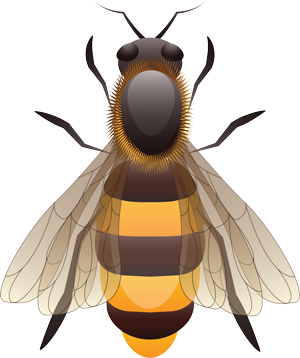
The queen’s job is simple—laying the eggs that will spawn the hive’s next generation of bees. There is usually only a single queen in a hive. If the queen dies, workers will create a new queen by feeding one of the worker females a special diet of a food called “royal jelly.” This elixir enables the worker to develop into a fertile queen. A good queen will lay around 2,000 eggs per day. The queen relies on the female worker bees to raise her young. She controls the workers’ behavior by producing pheromones.
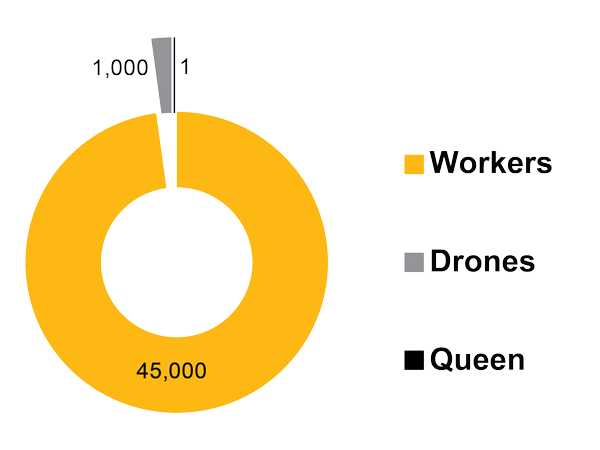
All bees start their lives as eggs. These grow into larvae and then pupate into fully formed bees. The queen, drones and worker bees take different amounts of time to complete the stages.
This is useful to know when you come to inspect your hive and need to know how long ago the queen has laid a particular type of egg.
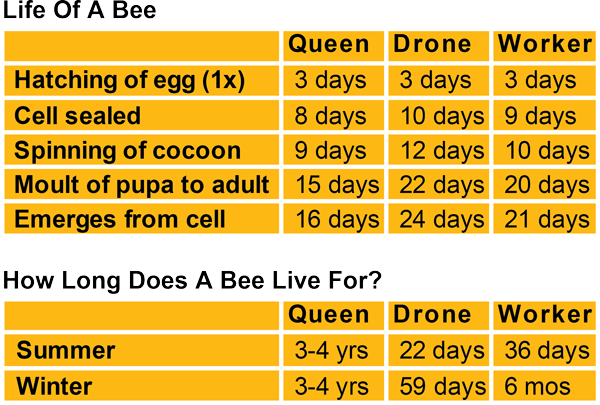
SOURCE: https://www.omlet.co.uk/guide/bees/about_bees/life_cycle/
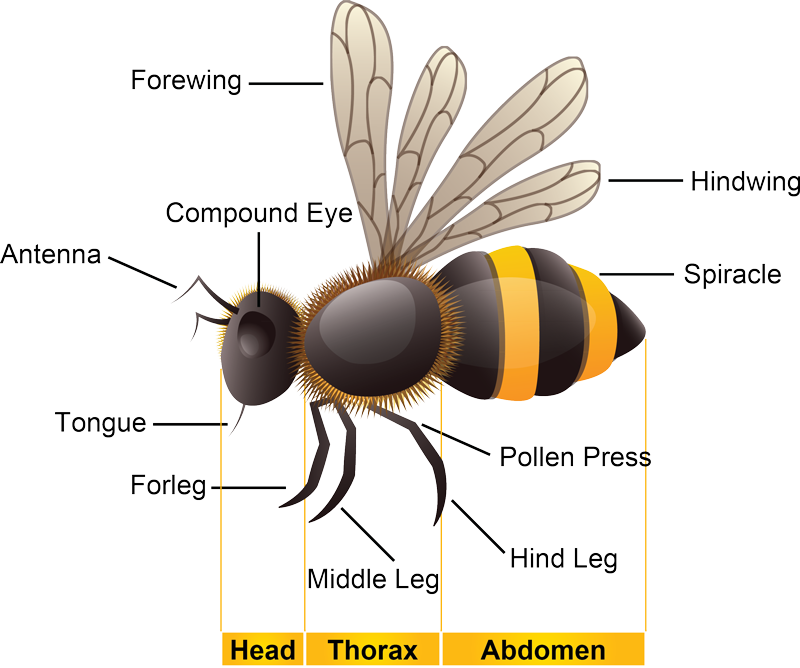
The Head
The head contains the eyes, mouth and antennae which are used for communicating.
The Thorax
The thorax consists of three segments below the head. The first bears the first pair of legs. The second bears the second pair of legs and the first pair of wings and the final segment bears the third pair of legs and the second pair of wings. The wings move at an amazing 11,000 times per minute and can carry the bee up to 12 miles an hour. All segments are covered in hairs which are long and feathered in the worker for collection of pollen. The drone has shorter hairs and the queen has only a few.
The Abdomen
The abdomen contains the bee’s digestive system, honey sack and, in the females, the reproductive organs and sting. The honey sack can hold approximately 0.25ml – so it takes a lot of flights (approximately 20,000) to create just a single jar of honey.
Bumble Bees
Bumblebees are considered to be beneficial insects because they pollinate crops and plants. They are very social bees and live in large “families”.
Unlike honeybees, bumblebees can sting more than once because their stingers are smooth and do not get caught in the skin when they fly away.
Carpenter Bees
Carpenter bees are solitary bees. They build nests just for themselves and only feed their own young. They get their name from their ability to drill through wood. Carpenter bee stingers are not barbed, so they are able to sting over and over again.
Killer Bees
Africanized “killer” bees look a lot like regular honeybees, but they have different wing measurements. Africanized bees live in South America and the Western and Southern United States. They have been known to chase people for over a quarter of a mile once they get excited and aggressive.
Even though they are called “killer” bees, their venom is no more dangerous than regular honeybees. However, these bees tend to attack in larger numbers, which poses a greater danger to humans, especially those who are allergic to bee stings.
Africanized bees can only sting once because their stingers are barbed and tear off when they try to get away.
Swarming is the bees’ way of multiplying. It is a completely natural occurrence that every beekeeper will encounter at some time or another. A successful colony will breed and become large. At this point they will decide to split and create another colony. The bees will start to produce a new queen and the old queen leaves the hive with around a third of the colony.
Signs That The Bees Are About To Swarm
There are several things that indicate that a colony might swarm:
- 1. They start to produce queen cells
- 2. There is no more room in the brood box
- 3. Clusters of bees appear near the entrance of the hive
When a hive is filled with honey and has no room for new eggs, worker bees search for a suitable place to set up a new colony. After the queen has mated, she takes about half the worker bees and starts a new colony in the new location. A new queen is left behind with the other half to continue the old colony.
